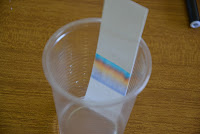Equipment
- Mortar and pestle
- Large spoon
- Kettle for warm water
- Large bowl or jug
- Sieve and funnel for straining liquid into bottles
- Plastic (PET) bottle and cap.
Materials
Bug ( for 5 Litres)
- Warm water
- 2 tsp active dried yeast
- 2 tsp sugar
- 2 tsp ground ginger
- 3/4 cup sugar
- 1/2 tsp cream of tartar
- 200L warm water
- 1L cold water
- Juice of 1/2 lemon, strained
- 1 tsp ginger beer bug.
Method
- In a large bowl, put the sugar and cream of tartar, then add the warm water.
- Stir to dissolve the sugar before adding the cold water.
- Get your ginger bug and pour all the liquid (not the sludge in the bottom) into a bucket and add the lemon juice.
- Stir well and then pour into your clean bottle.
- Store in a cool, dark place for two weeks before drinking.
- Make sure you open the bottle in the kitchen sink as it might overflow. Open the cap bit by bit to allow the air to escape.
- The ginger beer must be drunk over the 6 days
- You must bring the bottle back to school next term.




